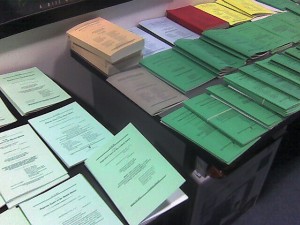One successful approach to the preparation of opening briefs is to assume the court knows nothing of the subject and is uncomfortable making a decision that no judge has made before. Each step in the argument must then be accompanied by citation to relevant precedent reflecting the wisdom of the that step and, overall, of the decision you seek. The key is to  identify the right starting place and the steps required to travel from the starting point to the desired end, avoiding the tendency to slide over or combine them.
identify the right starting place and the steps required to travel from the starting point to the desired end, avoiding the tendency to slide over or combine them.
Briefs using this model should provide all forms of authority needed to convince the judge to take the next step. Possible evidentiary issues need to be resolved; substantive questions need to be answered or shown to be inapplicable. As each step is explained and answered, the next step can be introduced and its issues and questions answered. At the end, the table of contents alone can walk the reader through the points to the desired ruling.
Once the steps are identified, the writer may elect to address evidentiary issues as a group, at the beginning or end of the brief. Alternatively, a writer may prefer to brief all issues presented by one step before turning to the next step. No matter which technique is adopted, work on later steps will often turn up cases and points that can strengthen the earlier steps. As work progresses, a single step may be perceived as comprising several steps, requiring additional reworking.
This briefing technique works well for highly structured briefs that are supported by existing law or by arguments well supported by law. When there is a gap in the law so that a particular step cannot be supported by citations, this technique highlights the gap rather than carrying the judge forward on compelling reasoning, Likewise, arguments founded principally on passion, as is the case for assertions of prejudice, are often made without relying on this structure. In many circumstances, however, this technique can provide a powerful edge because an opponent may be unable to change the direction of the steps.
Photo courtesy of Flickr by Wendy Seltzer (creative-commons license, no changes made).
